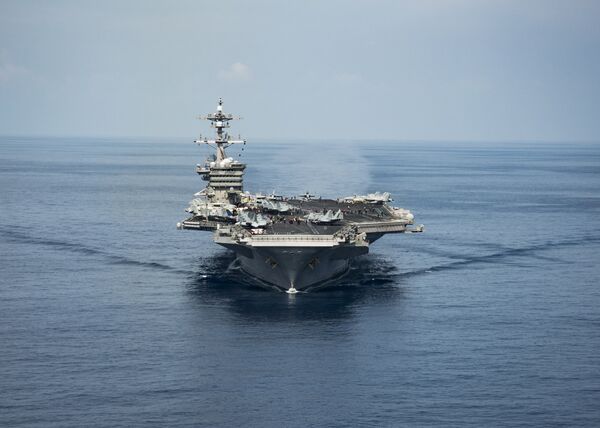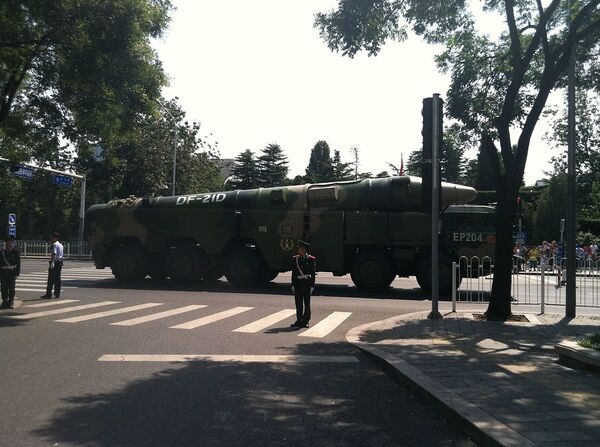If they took place, China's alleged missile tests in an area of the South China Sea closed off by a NOTAM warning from June 29 and July 3 were designed to send several messages to the United States, defence analyst and The Diplomat senior editor Ankit Panda has argued.
In an op-ed published in the South China Morning Post on Sunday, Panda said the suspected tests, likely involving either the DF-21D 'carrier killer' medium-range missile or the anti-ship variant of the DF-26 intermediate-range missile, were meant to convey to the US that China was prepared to use its growing military capabilities "to hold at risk American naval assets in the disputed waters off its course."
Specifically, he suggested, Chinese advancements in the field of anti-ship missiles, even if they are armed with a conventional payload, may serve to "cancel out the expeditionary advantage the United States has long enjoyed."
Furthermore, the suspected public demonstration of these capabilities over a sea area, as opposed to the land-based testing China normally engages in, may be meant to deter the US from keeping its vulnerable carrier groups in the region in the first place (the DF-21D and DF-26 have estimated range characteristics of 1,500km and 4,000km, respectively).
Also, "one of the messages the rocket force may have sought to convey is that it is already too late for the United States to catch up in a meaningful way," Panda wrote.

It was telling, according to the analyst, that the US reaction to the alleged tests was "unusually muted," with "limited criticism and concern seeping out via multiple press reports."
Indeed, on July 2, in an official statement on the missile launch claims, a Pentagon spokesman said only that China's actions were "contrary to its claim to want to bring peace to the region," and that "coercive acts" like these were "meant to intimidate" Beijing's maritime neighbours.

Ultimately, Panda suggested that although China's "capability demonstration" would not be enough to deter Washington from engaging in its 'freedom of navigation' operations in the strategically important region, the tests did "underscore that a new strategic reality is taking shape in the South China Sea."
China maintains that it did not engage in any missile testing in the South China Sea. On July 5, a spokesperson from the country's defence ministry said that the military's southern theatre command had "arranged live ammunition firing drills in waters near Hainan Island in accordance with annual exercise arrangements," but stressed that the reports of missile testing "do not accord with the facts."
The situation in the South China Sea has been a major source of tensions between Beijing and Washington. China has overlapping territorial claims in the sea territory with countries including the Philippines, Vietnam, Brunei, Malaysia, and Indonesia, as well as Taiwan. The US, meanwhile, has undertaken regular 'freedom of navigation' missions involving US warships to demonstrate that Washington doesn't accept China's claims to the territory.
The South China Sea is a major global strategic passageway, with over $5 trillion in maritime cargo passing through the area each year (including much of China's oil imports). Geologists also believe the area contains major untapped reserves of oil and gas. China has de facto control over the vast majority of the islands, reefs and shoals in the sea, and has promoted regional and bilateral negotiations without US involvement to resolve conflicting territorial and economic claims.




